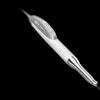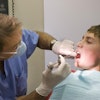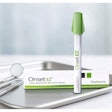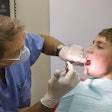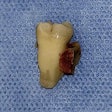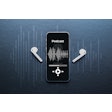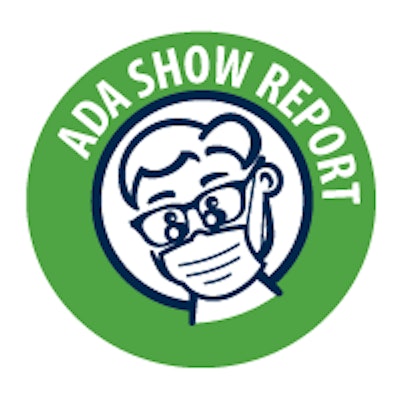
SAN ANTONIO - Pain management, identification of patients at high risk for substance abuse, and utilizing interventions for drug abusers were the focus of a session at the ADA 2014 annual meeting.
Citing soaring rates of the abuse of prescription drugs such as oxycontin and codeine, Patrick Sammon, PhD, a professor emeritus from the department of oral health science at the University of Kentucky College of Dentistry, said many children are getting their drugs from home medicine cabinets.
"Prescription drugs are easy to obtain and cheaper than on the street," he noted. "Kids think such drugs are safe because they are prescription drugs."
"Tell your patients to empty their prescription drugs every January," Sammon advised during the well-attended session, entitled "Pain Management, Addictive Disorders and Patient Monitoring: The Dentist's Role."
He recommended the proper disposal of prescription medications by taking advantage of community drug take-back programs that allow the public to bring unused drugs to a central location for proper disposal.
“Prescription drugs are easy to obtain and cheaper than on the street. Kids think such drugs are safe because they are prescription drugs.”
Sammon cited the following statistics among patients:
- 35% are nondrug users.
- 37% are low-use users.
- 28% abuse drugs.
- 9% are addicted.
"That means more than a third of your patients (37%) have a drug problem," Sammon told the group.
He advised using the SBIRT method: Screen patients, use brief intervention, and refer to treatment.
Drugs stimulate the nucleus accumbens area of the brain, known as the pleasure center, which results in the increased release of dopamine. They also affect the mesolimbic system, the brain's reward circuit.
Drug use, including alcohol, can damage the prefrontal cortex, which controls executive functions such as judgment, reasoning, and assessing situations, according to Sammon.
Withdrawal can be very difficult, he noted. "I had a terrible time stopping drinking, and I only did it through AA. "It's very embarrassing to go in there [AA meetings] the first time," he admitted.
Sammon pointed out that addiction is a genetic risk, noting that people have a four times greater risk of developing an addiction if there is a drug abuser in the family.
"There were seven alcoholics in my family, and five of them died from it," Sammon said. "I saw my dad sneak drinks; our family was a wreck."
Drinking is particularly popular among young people, who are usually targeted in ads for beer and other alcoholic beverages, he noted.
"I was elected president of my college fraternity because I could drink so much," Sammon recalled. "I thought I could handle it, but I couldn't."
Drugs for control of dental pain
Dentists now have an array of drugs to control pain, noted session co-presenter John Lindroth, DDS, an associate professor in the department of oral health practice at the University of Kentucky College of Dentistry.
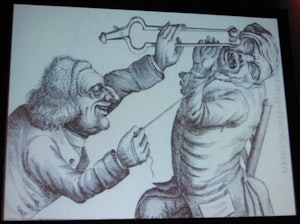 In the 1600s and 1700s, dentists held tongs with burning coals against the faces of their patients to distract them while doing extractions. Image courtesy of Patrick Sammon, PhD.
In the 1600s and 1700s, dentists held tongs with burning coals against the faces of their patients to distract them while doing extractions. Image courtesy of Patrick Sammon, PhD.But in the 1600s and 1700s, dentists held tongs with burning coals against the faces of their patients to distract them while doing extractions, he said.
Dr. Lindroth explained the two types of pain: albdynia, in which a light touch is painful, like sunburn; and hyperalgesia, in which pain is exaggerated, like slapping the back of a sunburned person or pulp testing a tooth, which causes patients to respond by pulling away.
The most commonly abused opiates are oxycontin and codeine, Dr. Lindroth said. Many young people mix codeine cough syrup with soft drinks or vodka, which are called Southern Lean, he noted.
Some 67% of patients misuse hydrocodone, so now prescriptions for it are given only for 30 days, with no refills allowed, according to Dr. Lindroth. "It's been a huge problem," he said. "I've seen a lot of it in Eastern Kentucky."
In the last few years, there's been a big switch to heroin because it's cheaper and easier to get than prescription opiates, he said.
Dentists should be on the lookout for drug abuse in their patients, especially young people, Dr. Lindroth advised.
"When you do blood pressure, watch for track marks, and make them roll up their sleeves," he suggested. "Prescribe opiates with caution and use minimum dosage."
The states have developed electronic prescription monitoring programs for controlled substances.
Studies show that the longer a physician has been in practice, the more they rely on controlled substances, Dr. Lindroth pointed out. Single doses of oral analgesics for acute postoperative pain in adults are usually very effective, he said.
In fact, studies show that 400 mg of ibuprofen provides almost the same pain relief as 10 mg of oxycodone, Dr. Lindroth noted.
He recommended a combination of 200 mg of ibuprofen and 500 mg of extra strength Tylenol for good pain relief, taken with food and plenty of water. "This has been very, very successful," Dr. Lindroth said.
Nitrous oxide is a good preventive pain measure as well as for use during dental procedures, he noted.
Many dentists are now giving intraosseus injections, which deliver anesthetics directly into teeth and bone marrow. Dr. Lindroth also suggested giving injections of the long-acting anesthetic bupivacaine for postoperative pain relief before dismissing patients.
